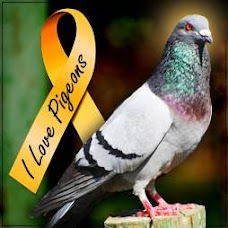Iran arrests two spy pigeons near nuclear facility
by James Exelby
Tuesday, 21 October 2008
Pigeons have been flying military missions for at least 850 years. Two spy pigeons have been arrested in the vicinity of the Iranian nuclear facility at Natanz, and handed over to the country's security services, local press reported on Monday.
Iranian paper E'temad-e Melli quoted an informed source as saying that one pigeon carrying a wired rod fixed to its body with the use of invisible threads had been caught near the Mihan Rose Water Company in Kashan, Isfahan province.
He added that the second bird, a black pigeon carrying a blue wired rod fixed to its back by invisible threads, had been caught at the beginning of the month.
The Natanz nuclear plant is alleged to be Iran's central facility for uranium enrichment to be used to build an atomic bomb, although there is some speculation that the site could be a front, while expansion of the centrifuge program goes on elsewhere.
The facility is located some 30km from the town of the same name, which itself is 70km from Kashan.
The use of pigeons in military operations dates back to at least the 12th century, originating in the Middle East.
The first recorded use of messenger pigeons was in 1150 in Baghdad and the great Mongol Genghis Khan made use of them soon after.
In 1860, Paul Reuter, who later founded Reuters press agency, used a fleet of over 45 pigeons to deliver news and stock prices between Brussels and Aachen. The outcome of the Battle of Waterloo was also first delivered by a pigeon to England.
In 1994, a medal awarded to a British pigeon working for British Intelligence during World War II sold for 9,200 pounds ($15,755).
The PDSA Dickin medal, the animal equivalent to the UK's highest military award for bravery, the Victoria Cross, was awarded to Commando the Pigeon, who had flown vital information, the location of German troops, industrial sites and injured British soldiers, out of occupied France in 1942.
Commando received his medal in 1945 for his "conspicuous bravery and devotion" before he was put out to stud.
Subscribe to:
Post Comments (Atom)












No comments:
Post a Comment